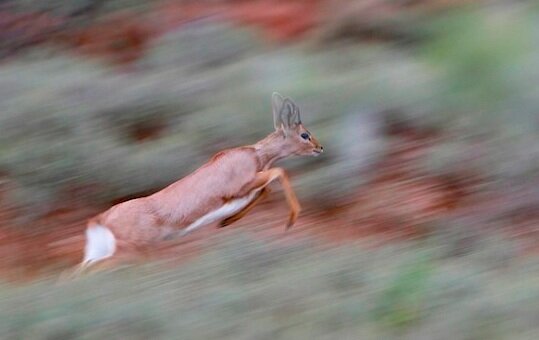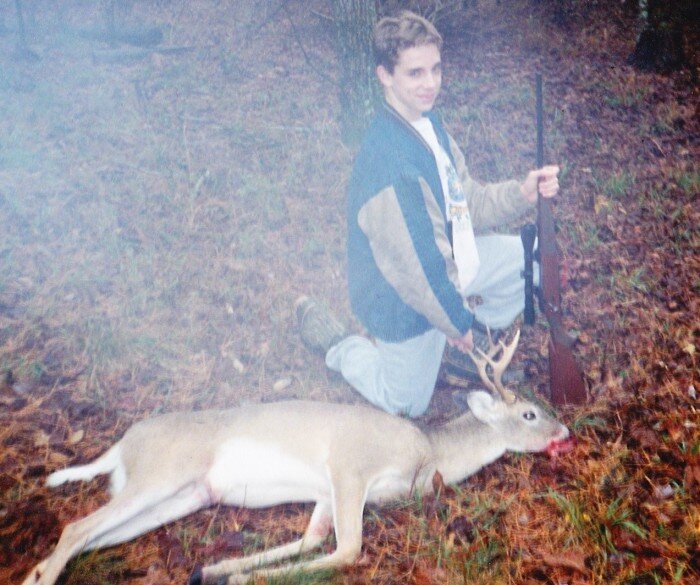Hunting With The Camera
I don't enjoy hunting with a camera when I'm hunting with a firearm, but juggling both tools at once often pays off. Wildlife photography is challenging enough without throwing a rifle into the mix, but sometimes just having an SLR and long lens handy pays dividends. While looking for kudu with Crusader Safaris in South Africa the other day, I carried a Canon 7D body with 1.4X teleconverter and 70-20mm f-2.8 IS lens in addition to my T/C Dimension rifle and Zeiss 2-8x42mm Duralyt scope. The rifle was shooting Hornady's 162-grain SST Superformance 7mm Rem. Mag. loads. The Canon was shooting 6 frames per second. Turns out I needed the camera more than the rifle. While we spotted several dozen kudu, none proved old enough for the pot. "We will shoot no bull before it's time" is a basic philosophy at Crusader Safaris, a rare South African company that hunts free-range African game in a country famous for fenced ranch hunting. Head PH Andrew Pringle grew up on a fifth-generation cattle ranch and now manages its wild game, along with the game on roughly a half-million neighboring acres, for fair-chase hunting. The abundance and diversity of species is astonishing. Kudu, eland, bushbuck, blesbuck, vaal rhebok, mt. reedbuck, warthog, springbuck, black wildebeest and about ten more species roam dozens of ranches, crossing cattle fences at will, migrating from brushy river valleys up thorn-scrub slopes to wind swept grassland ridges so high they carry snow. "Most of these were here when I was a kid," Andrew said of the many species we were spotting. "But their numbers have really increased in recent years because hunters pay good money to pursue them. It's extra income to the ranchers and provides jobs for all our guides, trackers, skinners, cooks and house cleaners." Erosion ditches, canyons and scars in many pastures attest to past abuses from overgrazing, but today most areas are lush with grass and scars are healing. Some appear to be too well protected, thick brush and young trees overwhelming the grasslands. But that just creates habitat for additional critters. Vervet monkeys and baboons hide in the woods and secretive, highly desired bushbuck really benefit from the heavy cover. Common little antelope like steenbuck don't grab much attention. This one did. "There's a steenbuck," said Greg, my PH for the afternoon. "He just crouched down on the left side of that thorn tree. See the little red spot? About 50 meters out. Not big enough to shoot." "Is too," I countered, lifting the Canon. Leaving the rifle with Greg, I walked directly at the 25-pound antelope, Canon loaded, charged and ready to fire. I was hoping to clear a view toward the hider's face, but before I could, it erupted into full flight. At that point I just aimed, held down the focus button and fired, mashing the trigger down while the motor drive poured through the digital ammo, clickety clickety clickety. The light was low and the shutter slow, but by following the motion, I was able to capture a few acceptable "fade blur" images. This one captures the essence of a little antelope in full fright/flight, doing what it does pretty much every day of its life to steer clear of jackals, caracal cats, leopards, eagles and even baboons. An antelope this tiny is easy to take down, so must remain hyper vigilant. Why in a land so rife with dangerous predators would an antelope evolve to be so little? Africa's largest antelope is the 2,000-pound eland. It's smallest is a duiker weighing less than 10 pounds. At 20 to 25 pounds the common steenbuck isn't much bigger. How do such pipsqueaks survive? By hiding and finding leftovers. It is speculated that small antelope survived by taking advantage of slim pickings. They don't need much, so even in times of drought they probably hung on while larger antelope died off. Their tiny, narrow noses can reach between branches and thorns to nibble small bits of vegetation larger mouths can't reach. When pressed by predators they can squirt through similarly tight cover to escape or lie flat to avoid detection in the first place. But when the ruse fails, the little steenbuck is as quick to leap and run as any other prey species. Rarely they get caught by a Canon. # # #












